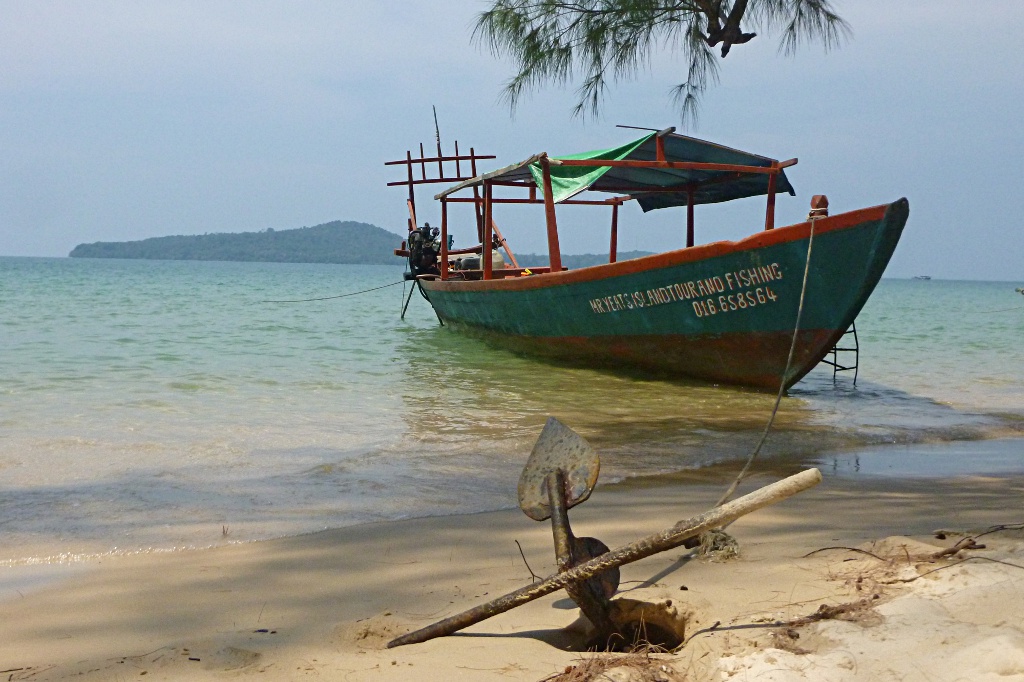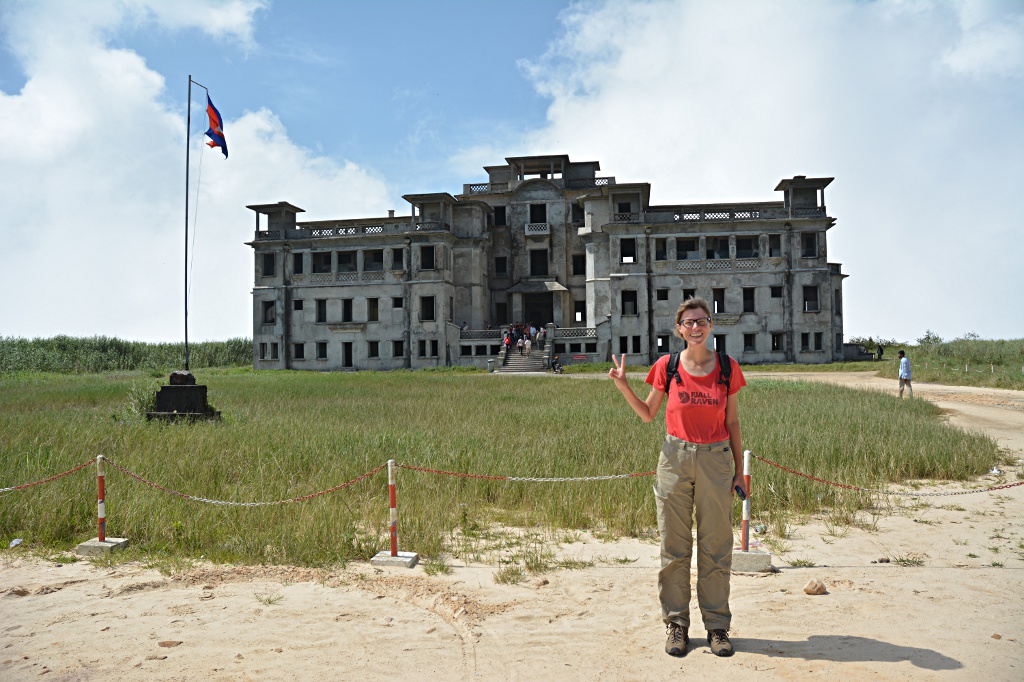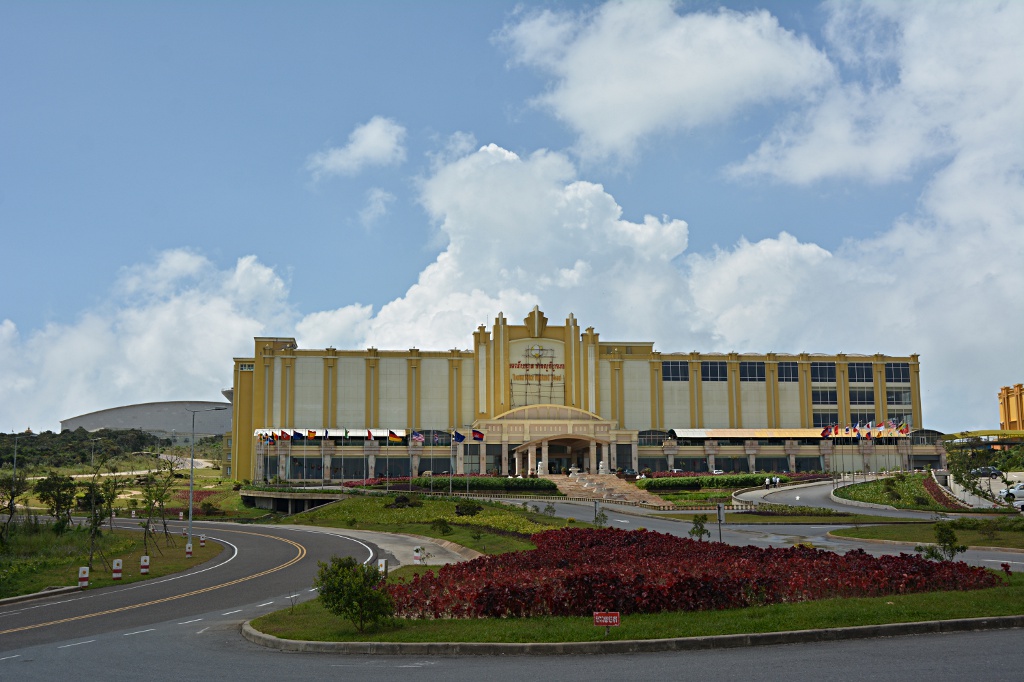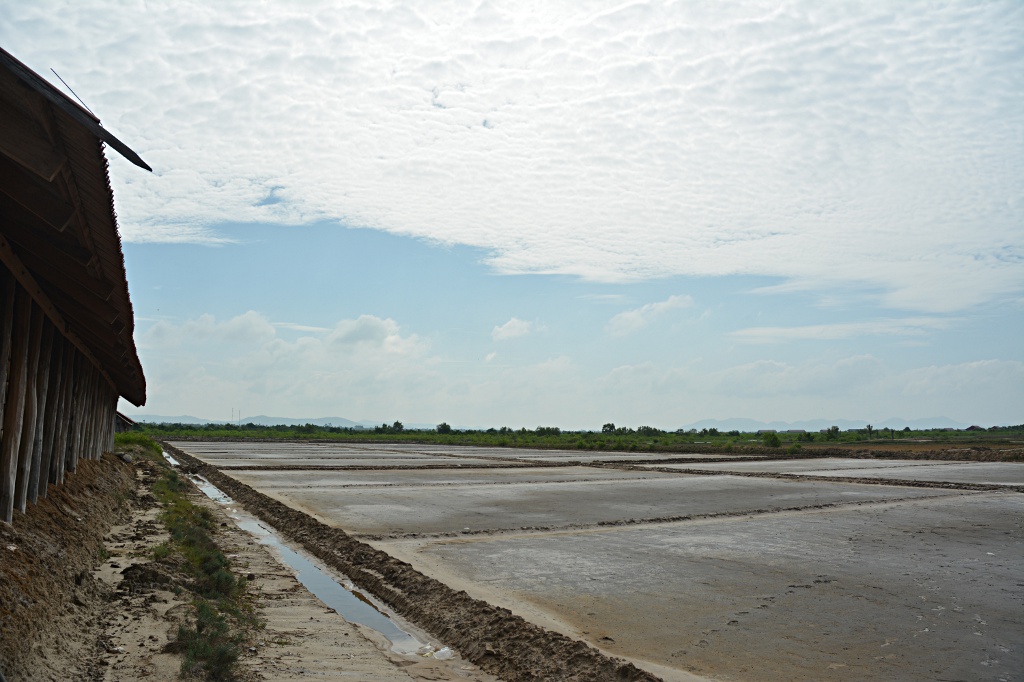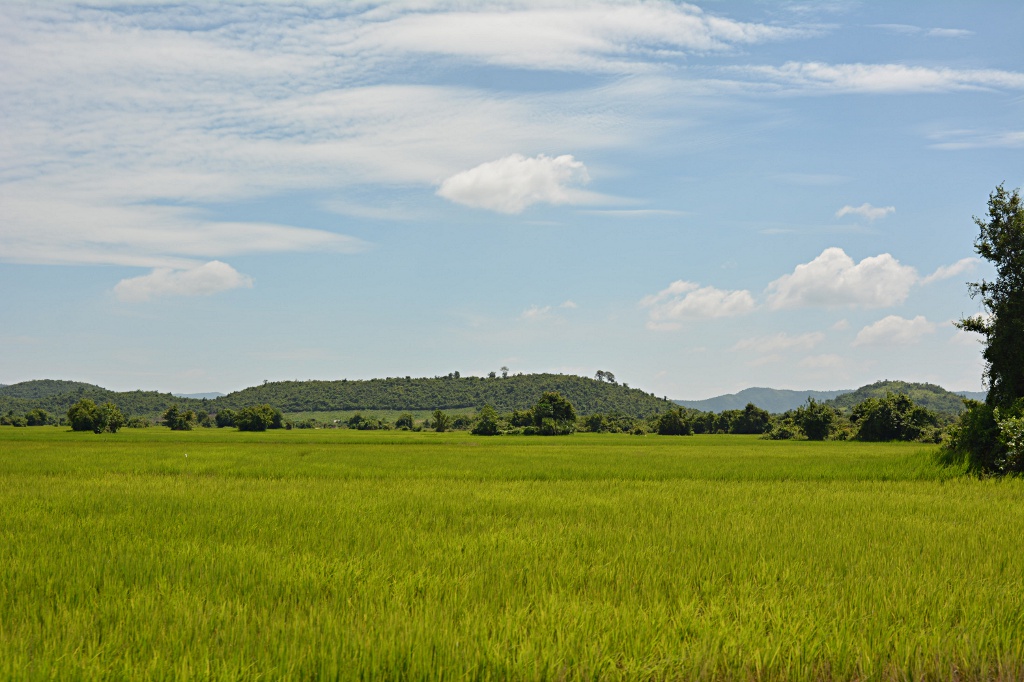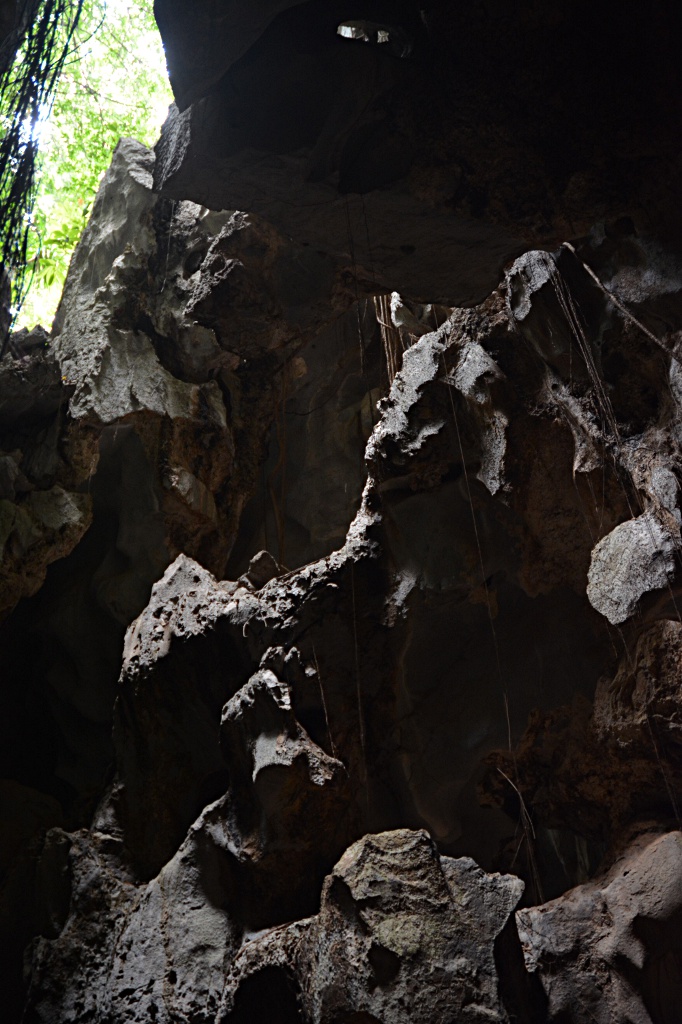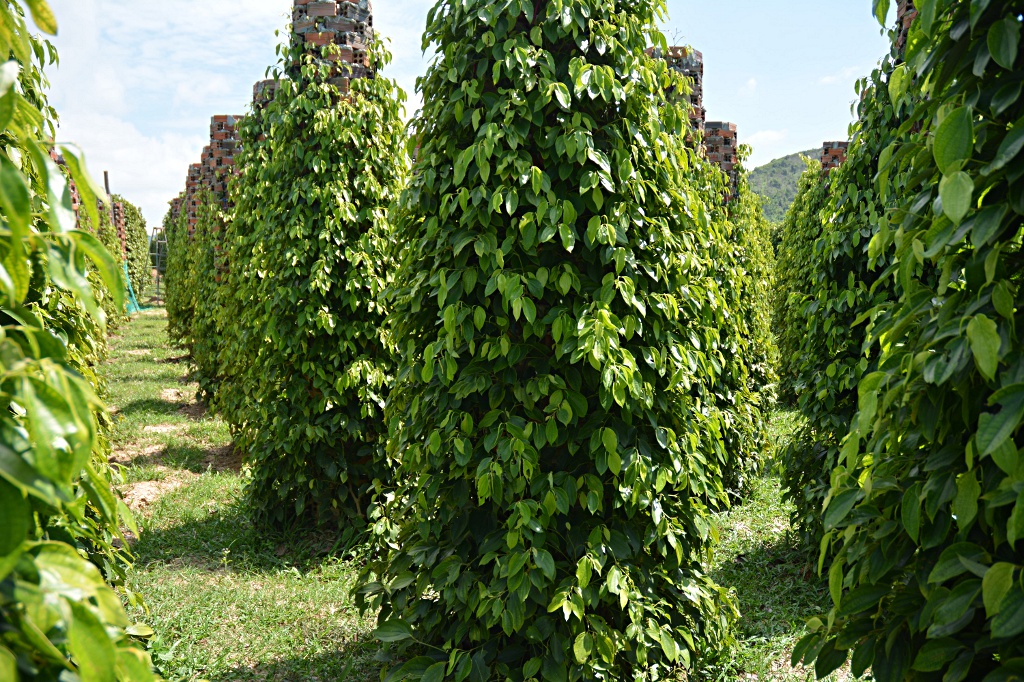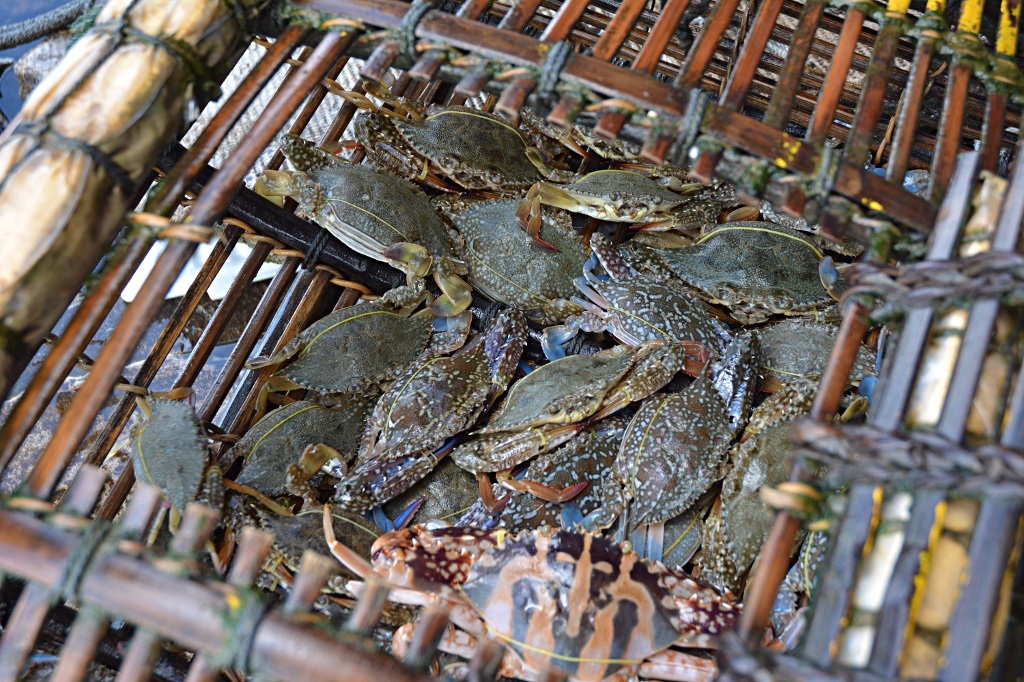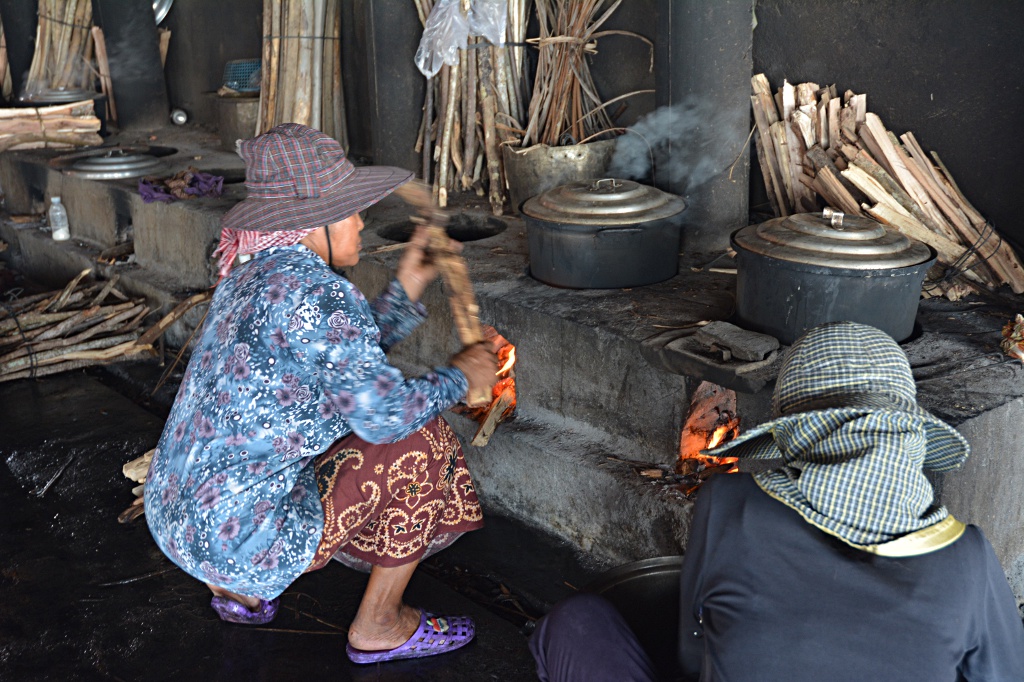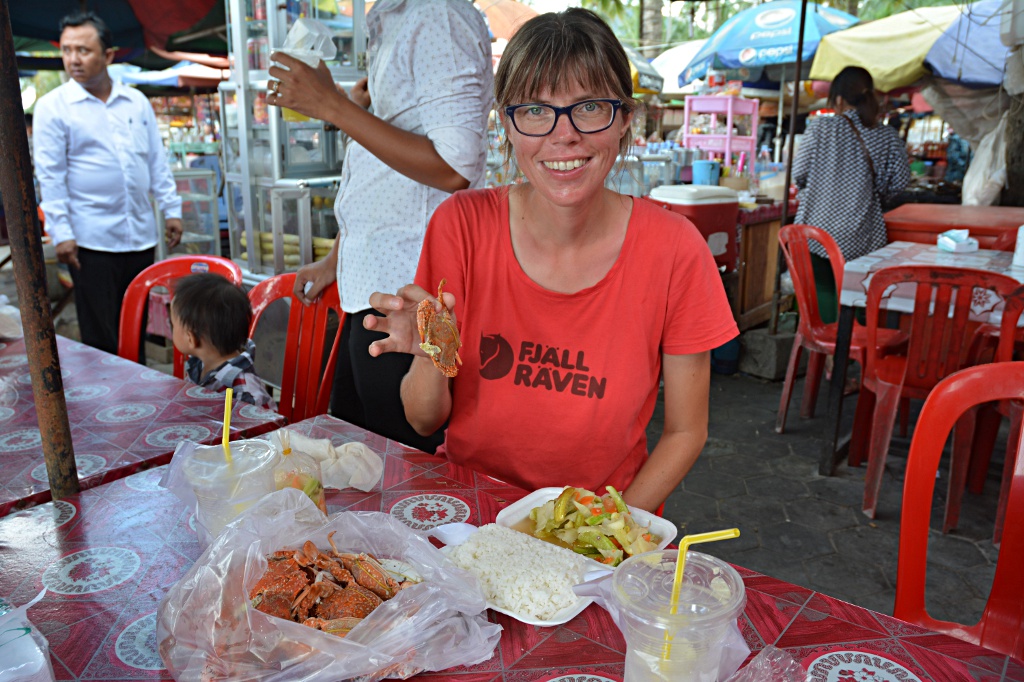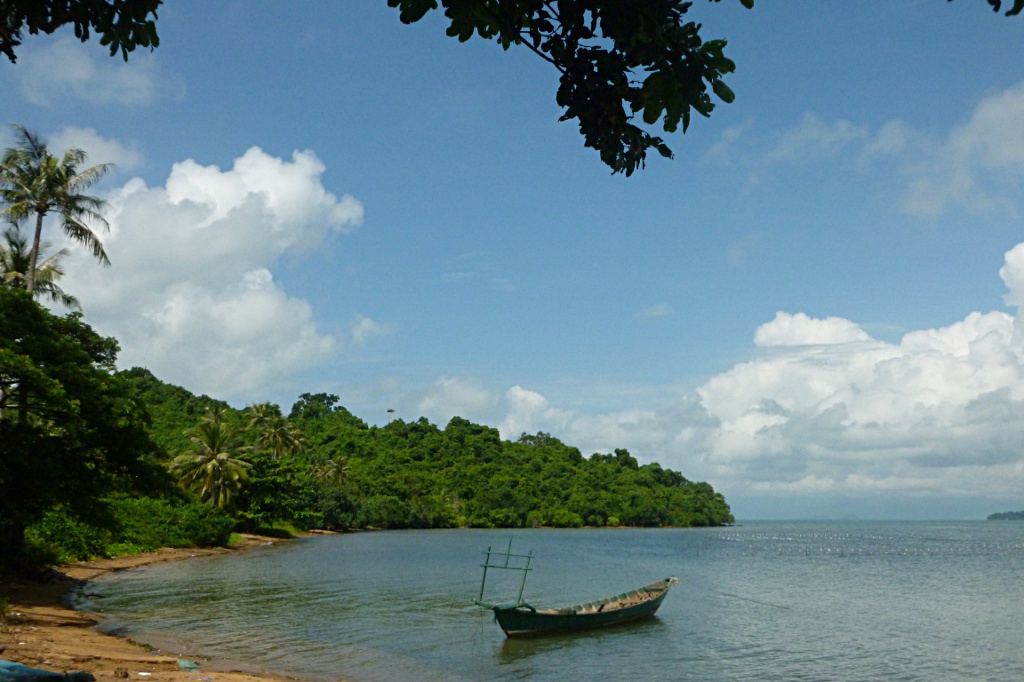After our first impressions of the remote areas of Cambodia and Phnom Penh, we headed out towards the sea. Once again successfully but not most efficiently, we avoided the commissions of guesthouses and travel agencies and bought the bus ticket directly from a bus company. After a 6 hour bus ride we got off the bus in a completely different world. This world was sporting beaches and palm trees and had a feel of peace, calm and relaxation. And of course a much more touristy feel to it all.
Early in the morning we left our guesthouse to take a tuk-tuk to one of the squares in western Phnom Penh, where we wanted to buy a bus ticket to Sihanoukville, located on the Cambodian stretch of coast of the gulf of Thailand. The tuk-tuk driver delivered us to an area where many bus companies had their offices, sucht that shopping for a bus ticket turned out to be a breeze. While the prices differed only be 3 dollars, this nevertheless meant, that they differed by up to 50%. We found a good price and had to wait for a little more than an hour for the bus to arrive. This gave us enough time to find a place to eat our breakfast, another typical local one at one of the stalls near the bus stops.
A little bit too late finally our bus arrived and we were quite a bit surprised to see that the bus was already two thirds filled, mostly with foreigners. They all looked a bit beat up since some of them were connecting from Siem Reap and others apparently had enjoyed Phnom Penh’s night life a little bit too much. Three hours into the drive we had a lunch stop and finally arrived in Sihanoukville around 3 pm. The bus was immediately surrounded by tuk-tuk drivers who wanted to bring the passengers to the ferry to Koh Rong or any of the beaches. We first took care of our biological needs letting the comotion calm down, before we started talking to prospective drivers about our destination and prices. In a very short period of time we managed to half the price for the tuk-tuk ride and immediately were off to Otres beach.
The calm beach at Otres lays a little bit outside Sihanoukville and offers most of what one might need for a few relaxing days on the beach: a nice set of guesthouses with and without bungalows, a few restaurants and a load of travel agencies which were selling everything except for their grand mothers… maybe there were even some exceptions there as well. We emptied our pockets at the last guesthouse on the beach, at Papa Pippo, a guesthouse run by an Italian and his father who have emigrated to Cambodia one and a half years prior. The service from the fellows of Rimini was impeccable and we even had to break our rule of eating local as much as possible given their delicious pizza. The smell just was too much.
We enjoyed the calm and took our first swim in the sea during this trip. Enjoying the sunset we let the time pass by in one the comfortable swings installed among the trees.
For the next day we opted for the Three Island tour, a swimming and snorkeling tour to three of the islands laying just off the coast south of Sihanoukville. At the first and third islands we got the chance to explore the seafloor with some not so amazing snorkeling gear, which just fullfilled its purpose. We relaxed under the trees in hammocks during the extended lunch break. A calm day was just what we needed following the previous quite hectic days.
The next morning we already said our goodbye to Sihanoukville, the center of beach tourism in Cambodia, and after a little more than 2 hours on the minibus we reached our next destination in Kampot. The small town Kampot is world-wide known in gastronomy for its exceptional pepper. Besides pepper there are lots of other things to be discovered in and around the small provincial capital. We went on our typical discovery tour after lunch to learn more about the place. Besides the two very touristy streets it was a short walk to the local market and the parts where one could experience the local life. One of our missions was to find a replacement for my netbook screen. The screen cracked on our bumpy ride from Pakse to Nakasang in Laos and meanwhile the crack extended across the whole screen rendering the netbook unusable. We found a small computer shop which offered a replacement for a reasonable price. The dealer had to order a new LCD panel from Phnom Penh, such that it would take a day until I could pick up the netbook. No problem, since we had planned to stay two nights in Kampot anyway. Near the computer shop we found a local restaurant which offered nice food.
Bokor National Park was our destination for the next day. We had negotiated with two motorcycle drivers the previous day that they would pick us up at our guesthouse at 8:30am and bring us to Bokor mountain. We rode the first 8 km to the park entrance where we briefly stopped to pick up a couple helmets for Lenka and I, since the road was rather windy to the top and especially the driving style of one of our drivers was questionable.
The main reason for us to make it to Bokor mountain where the ruins of buildings the French had built in the 1920s. While most of the buildings are gone, the church and the Bokor Palace Hotel, a former casino at the top of the mountain are still there. Additionally there is the ruin of king Sihanouk’s former residence on the way to the top. The beautiful country-side on top of the mountain is being massively overhauled with the immense development taking place. We wondered how this could be possible in a national park. A modern casino with a huge parking lot is already in place and nearby the whole mountain seems to be under construction. We got a very mixed impression though it was still interesting to see almost 100 year old ruins, an old temple and the new development taking place.
Before we returned back to Kampot we paid a brief visit to the Popokvil waterfall and stopped at king Sihanouk’s palace for a few pictures. At record speed we reached the bottom of the mountain realizing how moderate the temperatures had been on top of the mountain, coming down into the blazing afternoon heat. To escape the heat we found a nice shady restaurant where we enjoyed a cold drink.
Around 4 pm we were due to be picked up for a sunrise tour on the river running through Kampot. We had some time until then so I was happy to pick up my repaired netbook. The happiness quickly grew into frustration though: the dealer in Phnom Penh had sent the wrong LCD panel! I asked the dealer if he could ask for the correct panel again and send the netbook the next day to Kep, a small town only 25 km from Kampot. This finally worked out and I am finally able again to write down our experiences and prepare and upload some pictures to my blog.
Following the sunset cruise we enjoyed a delicious desert, before we retreated to our accomodation to once again work on the blog and pack our belongings for the next day. We had an agreement with a tuk-tuk driver to show us the area between Kampot and Kep and drop us off at a guesthouse in Kep.
The tuk-tuk driver arrived ahead of the appointed time such that we got a head start on our sight-seeing tour from Kampot to Kep.
The first stop, right outside of Kampot, where the salt-fields. Unfortunately production is suspended during the wet season, however the large empty fields and the storage houses gave us an impression on how much salt must be produced in this area. Along the road we quickly stopped at a fishing village before turning into a bumpy side road. The ride along rice paddies and through small villages gave us a few more insights into village life in southern Cambodia.
We particularly liked the farms which were built in the middle of rice paddies surrounded by a row of palm trees and very short grass due to the cows grazing on the farm. The grass almost looked like the fairway on a golf course. The goal of our bumpy ride was a cave which we explored as much as possible with the shoes we were wearing and our little torch.
Our real interest in the area took another few minutes to get to: behind the Secret Lake, a lake built by forced labor during the Khmer Rouge regime, we reached the Starling Pepper Farm. Since pepper production was re-introduced in the Kampot area, quite a few pepper farms were re-established. Looking out of the tuk-tuk we tried to guess which form pepper plants take. We agreed that it must be a bush. How wrong we were! We were quite surprised to find towers built of bricks on which a weed-like plant was growing: pepper. We enjoyed playing a little bit of hide and seek among the over-grown towers before checking out the shop. Similar to the salt fields, we unfortunately did not get to see the pepper production due to the season, the pepper was not quite ripe yet.
The tuk-tuk driver had to refill his vehicle’s coolant water at the Secret Lake and soon afterwards we reached our accomodation for the following two nights in Kep. We dropped our luggage in our room and chose two bicycles for a tour around Kep. The famous crab market turned out to be the first place where we got off our bikes. We started checking out the different stalls and soon found a place where they pulled baskets full of crabs from the ocean to sell. One could buy the crabs raw or cooked. We opted to buy 1 kg of cooked crabs and adding a few more ingredients from the adjacent food stall complemented our lunch. While both of us were experienced crab eaters, the small crabs proved to be quite a challenge and a lot of hard work was required to open the ten or so crabs. Exhausted from our big fight with the crabs we chose to stay in the shade and enjoy another cup of sugar cane juice before we continued our bicycle tour.
Regenerated we followed the road along the coast passing Kep Beach and its pavillions of hammocks, circled around town before heading back to our guesthouse. We decided to eat dinner on the nice terrace on top of our guesthouse’s roof, which proved to be an excellent decision. A few minutes into dinner a major thunderstorm hit the area continuing through the rest of the evening.
For our full day in Kep we decided to combine a little bit of exercise with a little bit of rest. We purchased tickets for Rabbit Island, a small island off the coast of Kep. A 6 km trail through virgin forests and along several beaches took us a slow three hours to complete. The real challenge was neither altitude nor distance, but rather the state of the trail in some places after the previous night’s rain. Knee deep stood the water in places, such that we had to find creative solutions to traverse. Our efforts were honored with a varying flora and beautiful, empty beaches. Back at the main beach we ate some very slow food, the fish took more than one hour to prepare, before we rested in the hammocks and enjoyed a swim. On the way back to the mainland we ran into three Swiss ladies whom we had previously met in Southern Laos on our painful songthaew ride from Pakse to Nakasang. South-East Asia is a small place too!
In the evening we prepared our backpacks one last time in Cambodia for the moment before we managed the last 25 km to the Cambodian-Vietnamese border.


